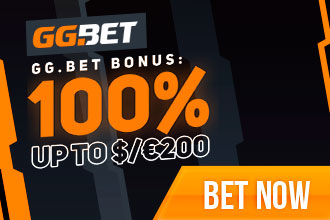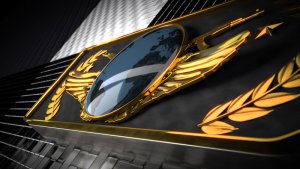If you want to join the NFT revolution, then the chances are that you’ll need to use an NFT marketplace. So we’ve prepared this handy guide that explains what an NFT marketplace is, what you can trade there, and why everyone is getting involved with buying and selling NFTs. So keep reading and see how you can get started in using an NFT marketplace.

What is an NFT marketplace?
An NFT marketplace is simply an online marketplace where you can buy, sell or trade NFT tokens. It gives creators a direct way to sell their non-fungible assets such as artwork, and customers can purchase these assets by using a cryptocurrency.
Anyone can sign up to an NFT marketplace and from here you can link your crypto wallet with the marketplace and start trading. The marketplace will commonly feature listings of all of the different kinds of NFTs such as art, collectibles, domain names, music, photography, sports trading cards and so on.
You will normally be given a chance to buy or sell NFT either at a fixed price or as a kind of auction. If you’ve purchased an NFT, you can then store it as part of your collection and it basically means that you have exclusive ownership of the unique digital asset.
Bear in mind that NFT marketplaces will impose fees for each NFT that you buy or sell. There will also be a royalty fee paid to the NFT creator each time that the digital asset is traded.
A quick look into the NFT meaning
Before we get into ranking and rating the different kinds of NFT marketplaces, it’s worth making sure that you understand the basic NFT meaning. An NFT is a non-fungible token which is a digital asset stored on the blockchain. This could be anything from a gaming avatar to an artwork, a video or even a tweet.
Having an NFT means that you have direct ownership of the asset. So that even if lots of people are able to see, use or even copy your digital asset, you still have the fundamental ownership.
The fact that an NFT is non-fungible means that, unlike a cryptocurrency such as Bitcoin or a regular currency like the US dollar, it is unique. The NFT has no direct value, but instead, its value is entirely based on demand. This means that an NFT for a piece of digital artwork could be completely worthless if nobody else wants it, or it could be the subject of a bidding war on an NFT marketplace and end up being worth millions. One thing’s for certain, and that’s that NFTs are here to stay and chances are that we’ll all be using an NFT marketplace sooner or later.
Which is the best NFT marketplace?
There have been literally dozens of NFT marketplaces that have emerged in recent years, and we can expect many more to be launched in the future. Here is just a handful of quality NFT marketplaces to check out:
- OpenSea: Easily the world’s largest NFT marketplace. This contains the full range of digital assets and artefacts ranging from sports trading cards to entire virtual worlds. The OpenSea marketplace takes place on the Ethereum blockchain.
- Rarible: A hugely popular NFT marketplace for creators, Rarible is also on the Ethereum blockchain, but has its own RARI cryptocurrency. It provides creators with an easy way to list assets that could range from complex digital artwork to a simple meme.
- Decentraland: This is an entire virtual world that lets you trade NFTs and you’ll also get a say in how Decentraland actually operates on the Ethereum blockchain. It features an impressive range of digital assets, and what’s best is that you can even trade properties and lands within the Decentraland virtual world itself.
How do you use an NFT marketplace?
The good news is that it’s very easy to get started at an NFT marketplace. Here is a quick checklist of what you need to do to start trading NFTs.
- Get a wallet: The first thing that you’ll need to do is to get a crypto wallet. Most NFT marketplaces will have a shortlist of recommended crypto wallets for you to download, or you could simply connect with your pre-existing wallet. Bear in mind that the wallet will need to be able to operate with the Ethereum blockchain to trade NFTs.
- Get your cryptos: Once you’ve got your crypto wallet set up, it’s just a matter of getting the digital currency from a cryptocurrency exchange. Again, you’ll probably be buying Ether coins to trade at most NFT marketplaces.
- Browse and start trading: Now the fun begins as you’ll get to browse all of the digital assets available on the NFT marketplace. Once you’ve connected your wallet, you’ll be able to customise your profile with your username, photograph and so on. You’ll instantly be able to buy an NFT instantly for a fixed price or put in a bid on an NFT auction.
How to pick your perfect NFT marketplace
The majority of NFT marketplaces will offer thousands of digital assets and they will work in roughly a similar manner. It’s worth doing a little research into the NFT marketplace beforehand as different sites might prioritise certain kinds of assets like collectibles or gaming avatars above other assets. Plus we should note the fact that different NFT marketplaces will charge different fees for each time that you buy or sell a digital asset.
Conclusion – Your guide to NFT marketplaces
NFT marketplaces are where you buy, sell and trade digital assets. They are a massive part of the crypto gaming community and they are also of interest for anyone in the realms of anything from digital art to sports trading cards. We’ve shown you that it’s pretty easy to use an NFT marketplace and they offer you a safe and simple way to collect your digital assets. So get your crypto wallet and start trading your NFTs.

























 EN Global
EN Global  BR Português
BR Português